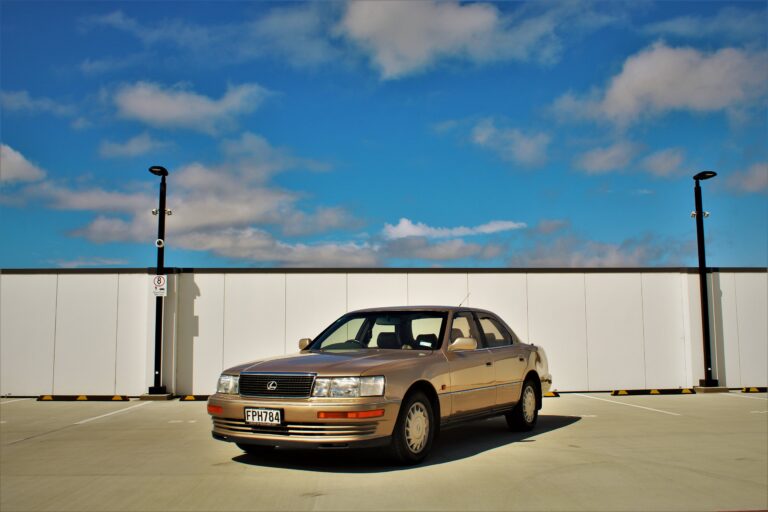We’re all going on a Summer Holiday!” sang Cliff Richard in the 1960s movie of the same name. He and his Shadows went in a double-decker bus, picking up along the way a group of dolly girls whose old Morris had given up the ghost. Presumably, the girls had not had their car properly checked over before embarking on their jaunt across the country.
These days, most people embarking on a holiday trip just jump into their modern car, check the petrol, and then head off to their destination. Such is the reliability of the modern car that nine times out of 10, they will get there and back without lifting the bonnet or checking tyre pressures.
However, for the classic car owner that’s not really much fun — anyway, why have a classic car parked up in the garage for most of the year and not use it except for shows?
Being into ‘go’ as opposed to ‘show’, we decided that instead of staying home at Christmas, we would go away. Furthermore, we decided that we would go by taxi — well, our taxi actually: yes, an old Morris Oxford Series VI, which we had adorned with period taxi accessories from the era. Some years ago, as part of collecting stuff, we had slowly accumulated these accessories, including a meter, ‘Blue Star’ light for the roof, roof rack and luggage rack, coin dispenser, ‘Please do not slam door’ decals for each door, and the grab rope across the back of the front seat. All we needed was a suitable car. The Morris was sourced from New Plymouth, requiring me to fly up and drive it back to Christchurch. The trip was uneventful but very enjoyable. Given that it seemed to motor along fine, we opted to use it for our trip to Picton for Christmas.
Don’t panic!
The first step was to give the car a good going over, which included a grease and oil change, a wheel alignment, and a radiator flush. I’m not exactly sure of the difference between mineral oils and synthetic oils — save for the obvious one — but having asked for a suitable mineral oil, it was not until I had replenished the oil that I discovered I had been supplied synthetic instead. Panic! It was the day before the trip and the exhaust was spurting out lots more moisture than normal. Should I change it or not? Giving the matter some thought, I noted that most moderns use synthetic and that seems to work on even racing engines so, arguably, the old Morris should not be affected.
Deciding that it was safe to do so, we turned on the taximeter and departed Christchurch. Incidentally, the taximeter once read in pounds, shillings, and pence but was converted to decimal currency in 1967 — thus, 10 shillings was, in fact, one dollar.
During the trip, we averaged between 80 and 96kph, and counted in excess of 110 vehicles passing us — including trucks. Out of those 110-plus, we got just eight acknowledgements for having pulled over to let each pass. So much for courtesy.
Stopping at Cheviot and Kaikoura for a leg-stretch and oil check, the dipstick still showed full and the temperature was obscenely normal, and it was a beautiful day driving up the coast. After five hours of driving — including a couple of stops along the way — we motored into Picton after an uneventful but very enjoyable and relaxing trip. Unlike when we travel in the Mustang, Karen had not been gripping the dashboard with white knuckles and her eyes closed.
To pass some of the time, we hung around the ferry terminal looking for the odd fare, but given the meter was reading 99 shillings ($9.90) upon arrival in Picton, we were unlikely to make much money. A Wellington-based Corporate Cabs driver had recently remarked to me that I wouldn’t get out of Wellington airport’s car park for that!
As it was customary to do back in the day, I checked the oil and water. The radiator was still full, the oil level had not changed one iota, and the engine sounded great. I gave the Morris a wash and wipe over, and we spent a pleasant few days cruising Picton and surrounds. All too soon it was time to head home, so we motored back to Kaikoura, encountering only five cars along the way. We even managed to pass a couple of them!
Old-fashioned motoring holiday
Years ago, people used to say that cars went better after a long trip. This is true. What’s also true is that the older cars go better in the rain. This is probably has something to do with the moisture in the air that gets sucked into the carburettor. If any of the local constabulary is reading this, please skip the next sentence. Yes, the Morris did manage to go past the 100kph limit briefly, and not just downhill either! The oil pressure was as per the driver’s handbook, showing around 40psi at idle and around 60–65psi at speed. Petrol consumption was around 7.1–7.4l/100km (38–40mpg).
So, all in all, a very satisfying and relaxing old-fashioned motoring holiday, spoiled in part only by the on-road antics of a few stupid tourists — perhaps the New Zealand Transport Authority (NZTA) should focus on promoting ‘safer drivers’ rather than ‘safer journeys’.
Despite the reliability and safety of our Morris, the NZTA would have us believe we would have been ‘safer’ in a modern car. Yeah, right!

Illustration: Steve Richards


